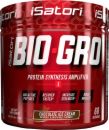
5 Surefire Steps To A Killer Six-Pack!
You won't develop a head-turning midsection until you understand the 5 critical steps to maximizing your ab workouts!
Don't be fooled by TV infomercials or gimmicky "beach-body abs" plans: You can't just hammer your midsection with a few crunches every day and expect killer results! Carving a set of summer-ready, cover-worthy abs takes an intelligent, strategic approach.
There are a number of factors to consider when training for a truly ripped six-pack:
- The abs have a higher percentage of slow-twitch muscle fibers than other skeletal muscle groups, but they still need heavy work in the lower rep ranges.
- Because the abs include so many different muscle groups, smart exercise selection is essential for complete development.
- Even the strongest abs can easily get covered by excess body fat, so an effective diet that cuts fat and spares muscle is essential.
- Cardio will speed your fat-loss efforts, but some kinds are superior to others.
- Ab workouts should get more challenging as you get stronger, so a true six-pack plan should have built-in progression.
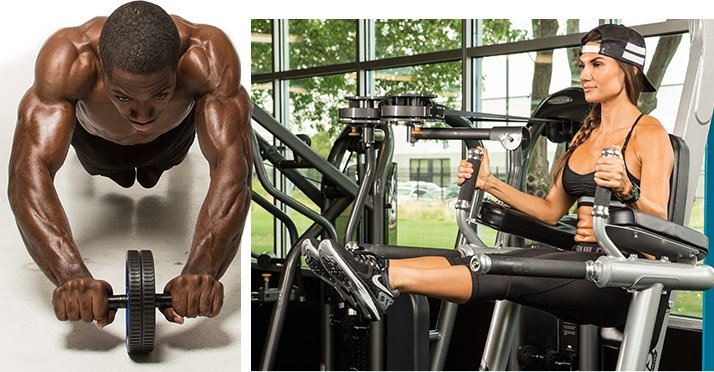
Failure to address even one of these elements could be the difference between netting a strong six-pack and ending up with a shapeless keg. Lucky for you, this surefire ab-training plan addresses all five elements. Your diet and training will be in sync, and you'll achieve the best possible results.
1. Mind All Your Muscle Fibers
The abs—much like the calves and forearms—are capable of working for extended periods of time, albeit at a low intensity. In fact, your core muscles contract to keep you standing upright all day long. To keep up with these demands, your abs are built on low-intensity, high-endurance muscle fibers that do not grow larger in response to training, but instead grow more aerobically efficient in response to high reps.
In fact, according to an early study published in the Journal of Acta Physiologica, there's very little difference in fiber composition between the rectus abdominis, obliques, and transverse abdominis. Among those different abdominal-muscle groups, 55-58 percent are comprised of Type I, or slow twitch, muscle fibers.1
To challenge and fully train all the muscle fibers that make up your abdominals, both fast- and slow-twitch, you need a routine that accounts for low-rep, moderate-rep, and high-rep training. You can't work your way to a six-pack with just high-rep bodyweight crunches, but you can't ignore your slow-twitch fibers, either.
The same aforementioned study also showed that 15-23 percent of your abs are comprised of Type IIa fibers, and another 21-28 percent are Type IIx. Both of these are fast-twitch fiber types. Given that fast-twitch fibers grow in response to training, your training protocol should target them. To build up the ridges that define three-dimensional abs, you need to do weighted ab movements for lower reps, about 8-10, while training to failure.
For complete development, this workout starts with weighted, low-rep moves to help build up your six-pack, then follows up with high-rep bodyweight exercises to help keep your midsection lean and tight. Your abs don't just get worked with low and high reps, but with a complete range of reps, which you progress though over the course of your workout. This ensures you train all the muscle fibers in your midsection.
2. Select the Right Exercises
You can also target certain parts of your midsection with exercise selection, which is another essential component of complete abdominal development. For example, when you plant your lower body in a fixed position and bring your upper torso toward it in a crunching motion, reducing the distance between your ribcage and pelvis, you emphasize the upper end of the rectus abdominis, or your upper abs. Conversely, when your upper body is stabilized and you raise your feet (and rotate your pelvis), you put the greatest workload on your lower abs.
This is not to say you can isolate one area, but you can emphasize different areas. Your obliques, for example, are active during torso rotation and when working in the lateral plane, as when doing side bends. Targeting the distinct areas of your abdominals with effective exercises will ensure full growth. But which exercises are best?
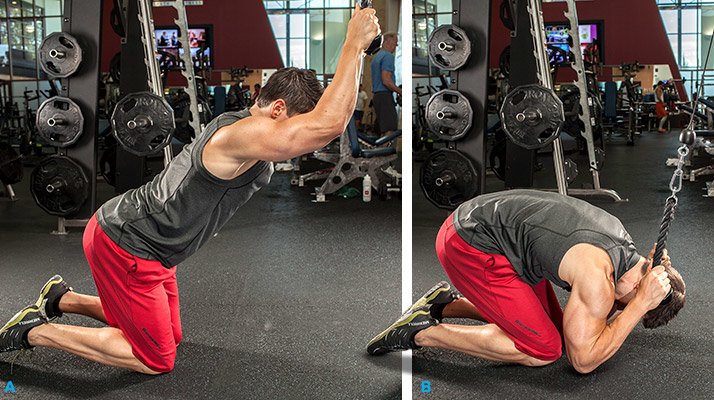
Cable crunch
EMG studies give us clues as to what kinds of exercises are better at targeting the abs. In one study, the Ab Flex—a simple contraption that has you lie of the floor, place your hands on pads, and perform basic crunches—was better at targeting the upper abs than other exercises in the study. The same study found that the basic crunch was superior for hitting both the upper and lower abs.2
In the end, the perfect ab workout combines challenging low-rep movements with the best higher-rep ones. In addition, you should rotate among the target areas that come first in your workout. That is, choose a lower-ab movement to start your workout one day, and an upper-ab movement the next. Rotate among the exercises that get hit with low, moderate, and high reps to ensure all areas of the midsection are hit with multiple intensities for better overall growth.
3. Carb Cycle to Burn Fat and Spare Muscle
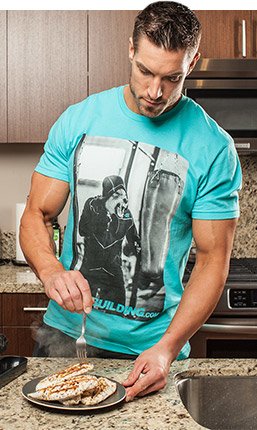
The appearance of your abs, more so than other muscle groups, is dulled by higher degrees of body fat. In fact, some overweight individuals may have a very strong midsection, but rolls of body fat just underneath the skin can completely obscure the muscles. No other body part can be so completely hidden. If your abs don't look sharp, cutting calories is a big part of the solution.
According to Stephen Adele, fitness author and owner of Colorado-based iSatori nutritional products, the successful approach means not only running a caloric deficit, but also cycling carbohydrate intake.
"I'm a big proponent of carb cycling because it allows your body to burn body fat and build muscle at the same time," says Adele, who has decades of experience taking individuals through transformation programs aimed at reducing body fat while simultaneously increasing muscle size.
Adele recommends starting from a baseline of how many calories your body needs each day, which is estimated by multiplying your body weight by 15. So, in this example, a 200-pound lifter requires 3,000 calories daily.
From there, he recommends you get 40 percent of your calories from protein, 40 percent from carbs, and 20 percent from fats (40/40/20). The 200-pound individual would consume 1,200 calories from protein (300 grams), 1,200 calories from carbs (300 grams), and 600 calories from fats (67 grams).
The lifter would then begin to cycle his carbs. The rotation comes into play like this, shown over 10 days, for a 200-pound lifter:
10 Day Carb Rotation |
|||
| Day | Carbs (percent) | Carbs (grams) | Total Daily Calories |
| Day 1 | 100 % | 300 g | 3,000 |
| Day 2 | 75 % | 225 g | 2,700 |
| Day 3 | 50 % | 150 g | 2,500 |
| Day 4 | 25 % | 75 g | 2,250 |
| Day 5 | 25 % | 75 g | 2,250 |
| Day 6 | 50 % | 150 g | 2,500 |
| Day 7 | 75 % | 225 g | 2,750 |
| Day 8 | 100 % | 300 g | 3,000 |
| Day 9 | 100 % | 300 g | 3,000 |
| Day 10 | 75 % | 225 g | 2,750 |
Remember, protein and fats don't cycle, so they remain consistent over the course of the entire program: 300 grams of protein and 67 grams of dietary fat.
With carbs and calories cycling down and then up, your body enters short-term periods of caloric deficit in which body-fat stores can be tapped for energy, and higher-carb and higher-calorie periods in which the body's energy stores are restocked and muscle-building is emphasized. What's important to remember, says Adele, is that you always remain in a state of positive nitrogen balance, meaning that your protein intake is high throughout. "You're taking your body through calorie-positive and calorie-negative phases," Adele says, "but not long enough for it to become catabolic," which would initiate the burning of lean tissue.
Adele warns against staying on a low-carb diet for too long, saying it compromises the body's ability to build and maintain lean body mass. "You just can't do it sufficiently without adequate carbohydrates."
Adele doesn't recommend anything beyond your standard bodybuilding fare—lean protein sources, complex and starchy carbs over simple sugars (except post-workout), and healthy fats in addition to the saturated ones you naturally consume when eating animal protein.
He also realizes that not everyone is going to count calories, but recommends you learn how to eyeball foods—especially what 30-35 grams of protein looks like—and read labels, at least in the beginning. What you really need to keep your eye on, he insists, is carbohydrate intake.
A couple of supplements can help you maintain muscle mass while cutting calories. Keeping protein intake high will ensure you have enough amino acids available for muscle tissue so that it doesn't start robbing other muscle tissue for energy needs.
Bio-Gro, a protein-synthesis amplifier, is a great product from iSatori that's virtually calorie-free and has anticatabolic properties to minimize wasting when in a calorie-restricted state. Ingesting additional BCAAs while dieting can also stave off catabolism, and iSatori's Amino-Amp can further encourage muscle growth.
4. HIIT Your Cardio
Training regularly with weighted and bodyweight ab exercises and eating a clean, high-protein diet that cycles carbs are two linchpins for great abs; unfortunately, your results will fall short of your expectations if your body fat is above about 12 percent (for men). To reduce body fat, cardio is key. The days of doing long, low-intensity bouts of cardio on a stationary bike or treadmill are over; those methods are far inferior to what's called high-intensity interval training, or HIIT.
HIIT alternates periods in which you work at near-maximal intensity with recovery periods at a very low intensity for a total of about 20 minutes. HIIT blasts through calories during the actual training period, yes, but it also gives you a significant boost in excess post-exercise oxygen consumption (EPOC). Increased EPOC means you continue to burn calories even after your training session has ended—for up to 24 hours afterward, in fact—because your metabolism is substantially elevated.
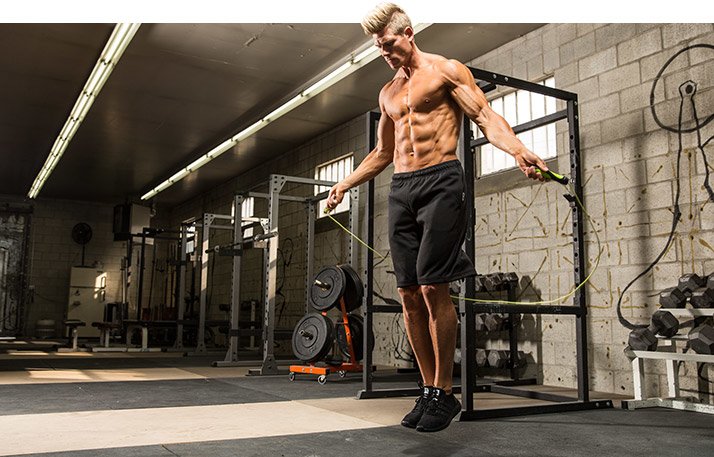
The difference in EPOC between HIIT and low-intensity cardio is significant. Low-intensity cardio just doesn't stack up. To get the twin benefits of burning more total calories during your cardio session and afterward, give HIIT a try.
Start out with all-out cardio blasts of 20-30 seconds—best performed outdoors, on an exercise bicycle, or elliptical machine—alternated with 60-second low-intensity recovery periods. As you get better, strive to lengthen the high-intensity sessions and shorten the recovery periods. Work your way up to 20-25 minutes three times a week and you'll see a real difference in your body-fat levels!
5. Increase the Challenge Every Workout
Many trainees follow ab routines that consist of a couple of exercises done to sets of around 20 reps. But that approach doesn't build in progression, which calls for making your abs work harder every workout. Always strive to use a greater resistance or do more reps from one workout to the next, rather than falling into a comfort zone in which you stop once you reach a predetermined number of reps.
Building progressive overload into your ab training is just as important as when training other body parts. If you're simply doing 3 sets of 20 and calling that your ab workout every time, you're not giving your abs a reason to get stronger or grow!
As you get stronger, increase the overload. Consciously try to add more weight or do more reps each week to challenge your abdominals to become stronger, much like you do with bench presses and arm curls. Keep your low-rep sets low by adding weight once you can do about 12 reps.
The Low-High Abs Program
Pick one exercise in each group to work your abs with low, moderate, and high reps. Rotate among the exercises to ensure you're hitting all areas of your midsection. As you get stronger, it's important to either increase the resistance or degree of difficulty of a given move.
Low-rep exercises: Choose a resistance so you fail at 8-10 reps |
|||
| Exercise | Target Area | ||
| Cable crunch | Upper abdominals | ||
| Machine crunch | Upper abdominals | ||
| Hanging leg raise | Lower abdominals | ||
Moderate-rep exercises: Choose a resistance or degree of difficulty to fail at about 15 reps |
|||
| Exercise | Target Area | ||
| Decline-bench crunch | Upper abdominals | ||
| Ab roller (to sides or straight) | Obliques, upper abdominals | ||
| Hip thrust on incline board | Lower abdominals | ||
High-rep exercises: Choose a resistance or degree of difficulty to fail at about 20-25 reps |
|||
| Exercise | Target Area | ||
| Crunch | Upper and lower abdominals | ||
| Ab flex | Upper abdominals | ||
| Oblique crunch | Obliques | ||
Ab-Training Assistance
Sets and Reps: Choose your reps based on whether it's the first, second, or third movement in your workout. Your goal is to cover all three rep targets in your training session. Beginners should do two sets of all exercises; intermediate can do three; and advanced trainers can do up to four sets.
Choosing the Right Weight: Choose weights that allow you to complete the target number of reps. On weighted movements, increase or decrease the resistance so that you fail at your target rep. If the weight's too light, don't just stop at the target rep; add weight on your next set. It's important that you reach as close to muscle failure as possible at the target rep.
On bodyweight moves, if you can't reach the target rep or if the movement is too easy, adjust the degree of difficulty on subsequent sets. For example, do hanging leg raises for the lower abs with your legs straightened, or with a medicine ball between your knees, when the bent-knee version becomes too easy.
Exercise Selection: Do heavy, low-rep movements first. Because you fatigue over the course of your workout, you don't want to save the heaviest moves for the end. Instead, choose the most challenging exercises early in your workout, when your strength levels are highest and you can do 8-10 reps per set.
Progress to less challenging exercises you can do for more reps toward the end of each workout. Relatively easier movements are best saved for the end of your routine so that you can make the abs burn with higher-rep sets.
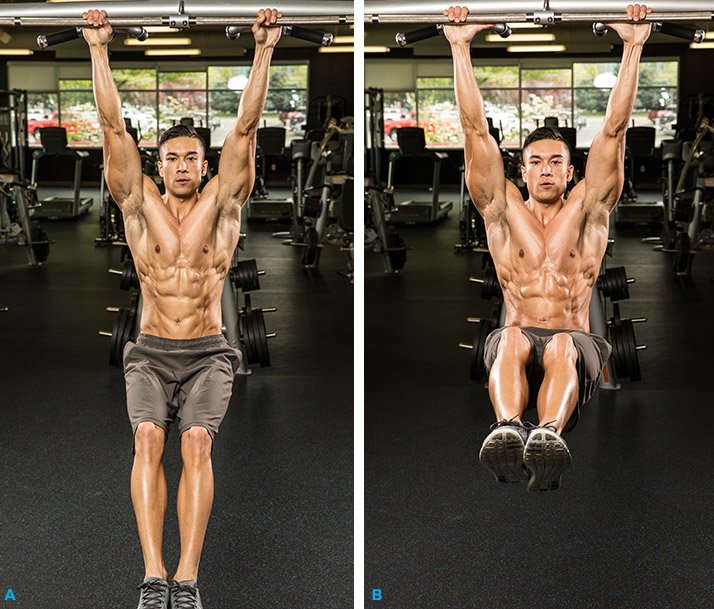
Hanging leg raise
Using multiple intensities—meaning you're taking your sets to failure with high, moderate, and lower levels of resistance—works all the muscle fibers of your midsection.
Rotate which area—upper versus lower abs—you start with from one workout to the next. Restrict oblique movements to moderate-to-higher reps.
Form: It's easy to cheat on ab exercises by using momentum, but that keeps the target muscle from doing the work. Don't rush through an exercise using ballistic movements; good form counts. Using a smooth, deliberate motion helps increase the intensity of the contraction and minimizes momentum.
Rest: Take about one minute of rest between sets. Toward the end of your workout, when you're doing high-rep moves, you can shorten your rest interval to increase the intensity.
Frequency: Don't train your abs every day. Using a weighted approach (for fewer reps) is going to make your abs sore, and they'll need time to recover. You can train abs every other day or three times a week.
Progression: Progression is important; as you become stronger, add weight to increase the overload. You can also choose slightly more challenging versions of a movement, like increasing the angle of the bench when doing decline-bench crunches.
Variety: Mix up your routine at regular intervals. Not only should you find substitute exercises that hit the target muscle in slightly different ways, you can also use techniques like rest-pause or dropsets to fatigue the muscle.
References
- Häggmark, T., & Thorstensson, A. (1979). Fibre types in human abdominal muscles. Acta Physiologica Scandinavica, 107(4), 319-325.
- Beim, G. M., Giraldo, J. L., Pincivero, D. M., Borror, M. J., & Fu, F. H. (1997). Abdominal strengthening exercises: a comparative EMG study. Journal of Sport Rehabilitation, 6, 11-20.


